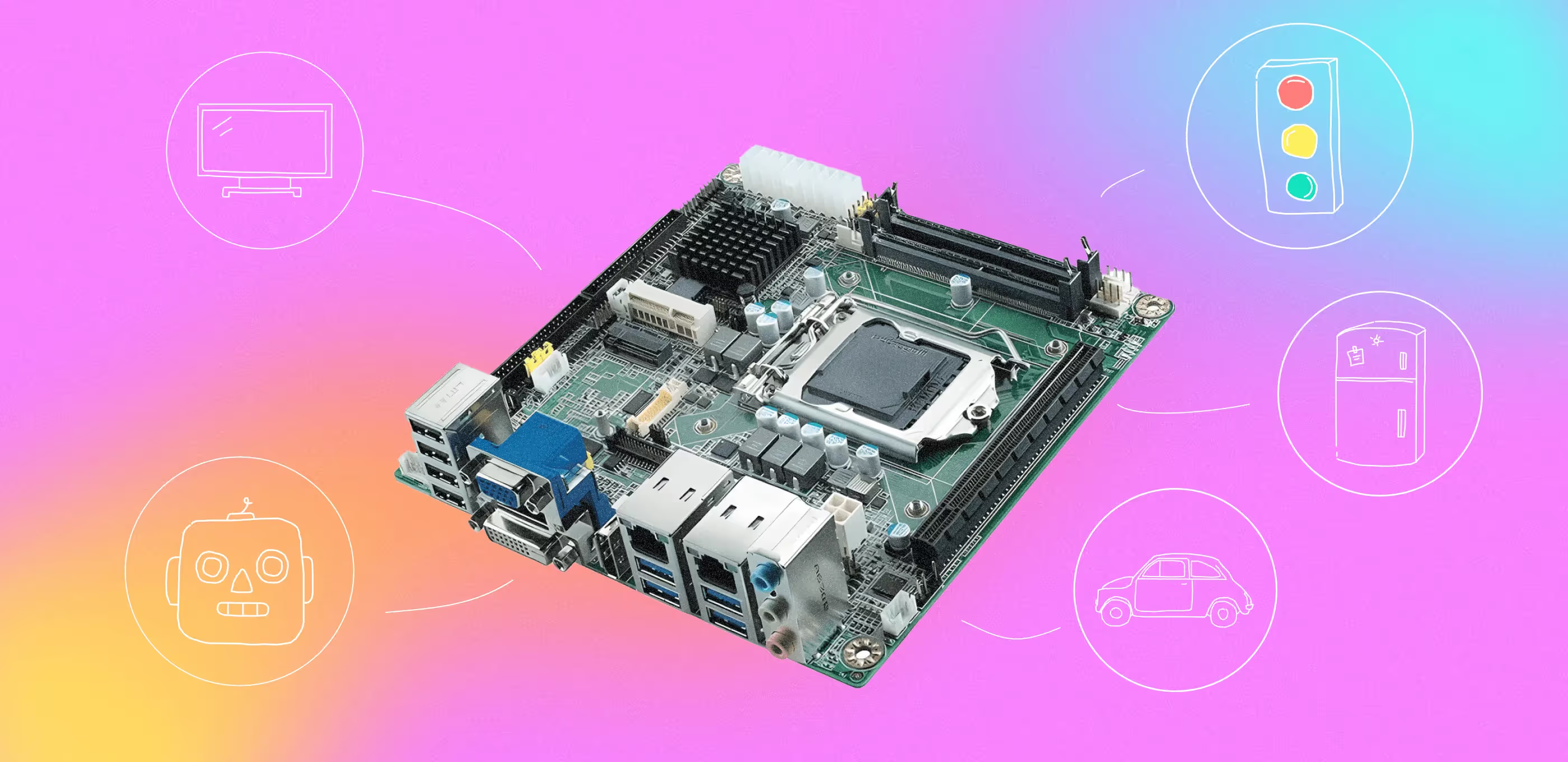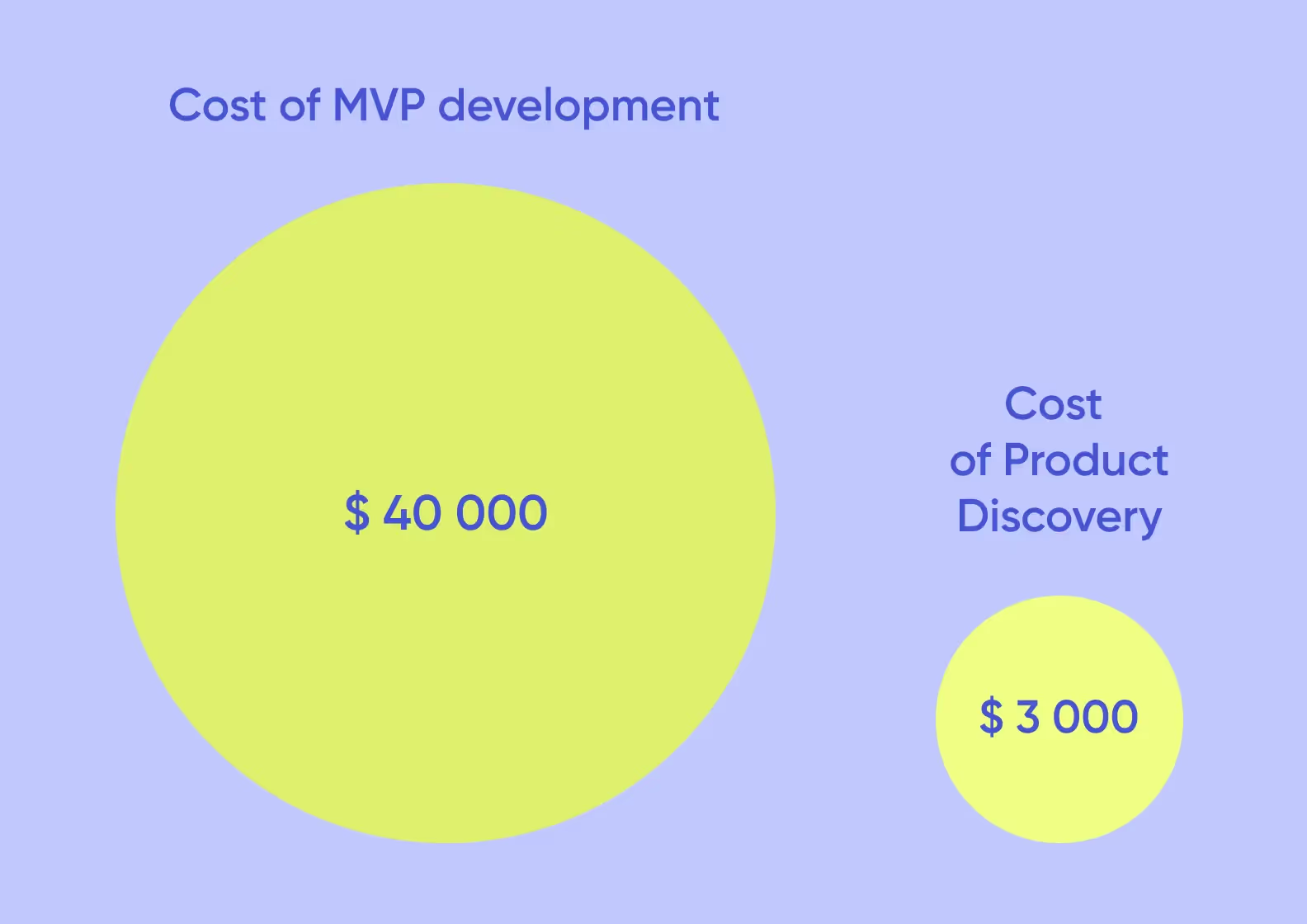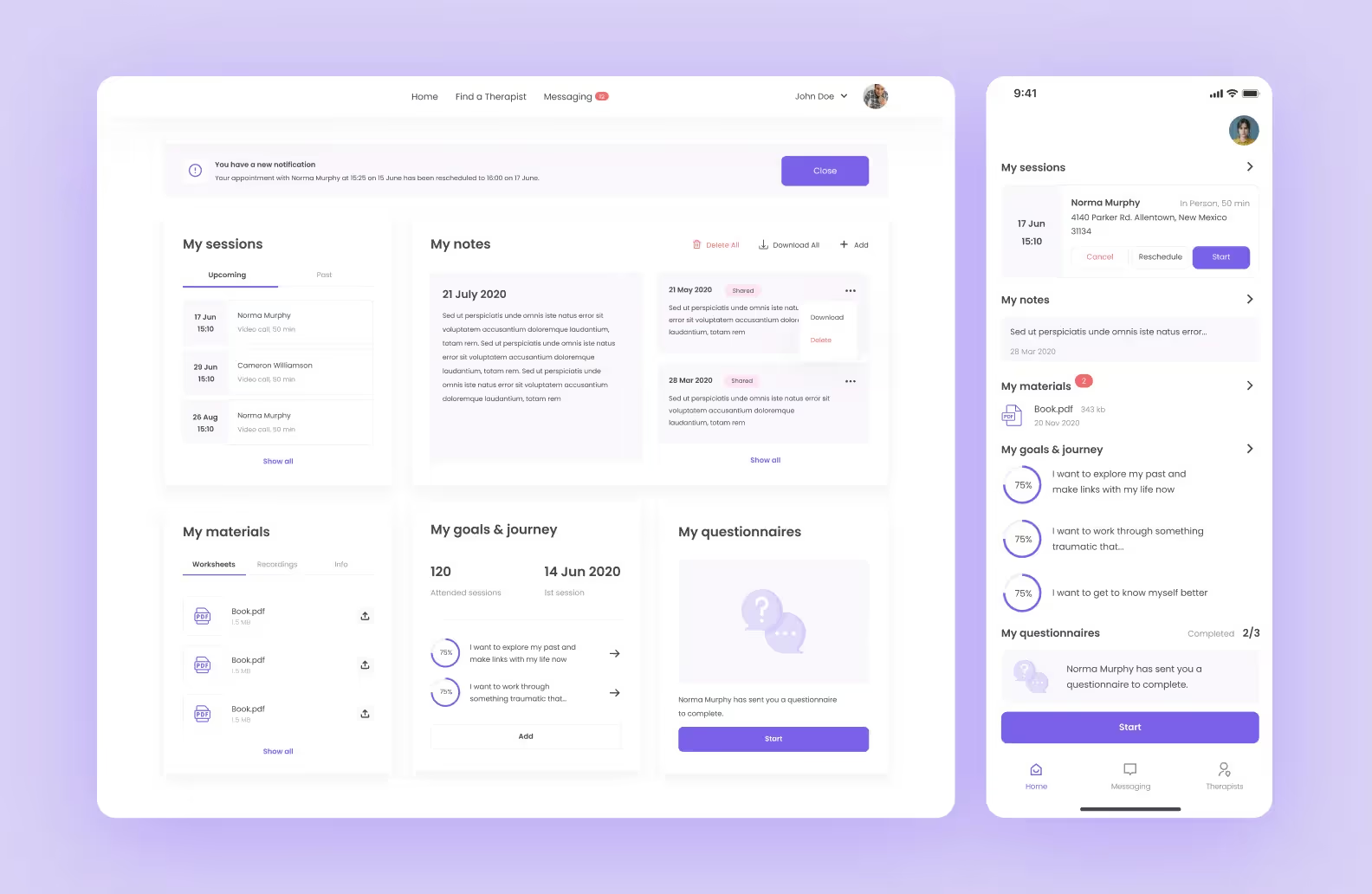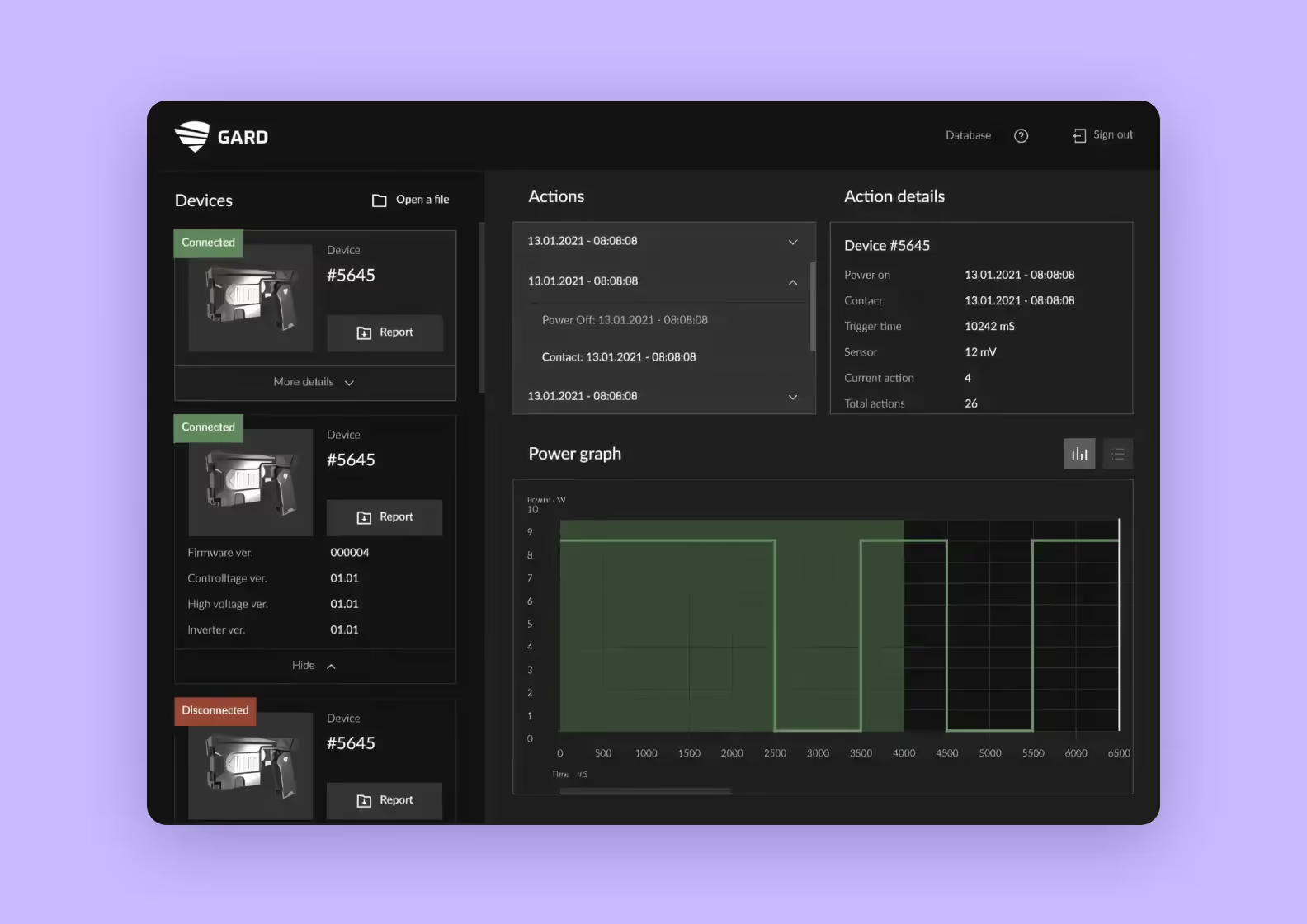


Welcome to the world of embedded software development — where tiny code makes a big impact. Imagine a universe where your toaster has more computing power than the guidance systems that sent astronauts to the moon for the first time. That’s what embedded systems are all about.
But how do you even create embedded software? Where is it used? Let’s explore the tools that make the impossible possible and discover how these pint-sized programs are revolutionizing businesses.

Embedded software operates specific hardware within electronic devices. Unlike regular computer software, embedded programming is tightly knit into the hardware it controls.
An embedded system often runs on devices with limited memory and processing power, so it has to be super efficient. This requires careful coding and IoT design to ensure that the software uses minimal resources while still delivering the desired performance.
Another key aspect is real-time operation. Many embedded systems need to react in real time, like a car’s anti-lock brakes that spring into action to prevent skidding. These quick responses are vital.
Embedded software also emphasizes reliability and stability. Since it often controls critical functions, any failure could lead to dire consequences. Software developers work hard to make sure it’s as dependable as possible.
Embedded systems are getting smarter and more capable, playing a key role in creating connected devices in many fields. Let’s explore the most common applications.
Embedded software is the behind-the-scenes hero in many of your favorite gadgets. In smartphones, it ensures everything, from the touch screen to the camera and connectivity features, runs smoothly.
Smart TVs use it to manage internet access, connection to streaming services, and user interfaces for a seamless viewing experience.
Wearables like fitness trackers and smartwatches rely on embedded software to monitor health metrics and provide real-time updates.
<div class="post_divider"></div>
The application of embedded software extends beyond personal gadgets, though. It also enhances service-based applications, such as powerbank rentals, by integrating IoT technology.
The EnerGO project involved creating a powerbank renting app inspired by the client’s experience in China. The client had an idea and investments but needed to integrate the app with IoT stations, which was a new challenge for the development team.
The stations required changes within the embedded software first, and after a couple of calls with the manufacturer in China, we managed to do it. The result — a cross-platform app for iOS and Android, along with additional apps for advertising and maintenance.

<div class="post_divider"></div>
The IoT (Internet of Things) and smart home systems use this software to gather and process data, allowing them to respond to user commands and environmental changes.
In smart homes, it connects various devices, enabling seamless cooperation. This integration enhances convenience, energy efficiency, and security, creating a more connected and automated living environment.
And when it comes to smart cities, this tech helps keep traffic flowing, streetlights shining, and trash bins empty.
In healthcare, it’s used in everything from digital thermometers to complex MRI and CT scanners, processing data in real time to aid diagnosis and treatment.
Pacemakers use it to monitor heart rhythms and deliver pulses, while insulin pumps calculate and administer doses for diabetes management.
Embedded software also supports data logging and remote monitoring, helping track patient data and manage chronic conditions.
Creating effective embedded software involves a structured approach. Here are the key steps:
The project starts with sketching out the goals and objectives, giving everyone a clear idea of where the project is headed. By pinpointing the problems the software will solve, you can focus on crafting solutions that will hit the mark for users.
This step also means getting to know the audience and the environment where the software will work, making sure everything fits the project’s purpose. A well-defined scope acts as a trusty guide, steering the development process and keeping everyone on track.
All of these fall into the project discovery phase, a process where you research to validate your idea. It can even save you money if you find out the market needs don’t match your proposition.
<div class="post_divider"></div>
One of our clients came to us to test their idea of an AI-powered dating app. It sounded promising, so we started investigating. After thorough research, polls, and interviews, we found out that the potential users don’t need AI to help them find love.
We showed our findings to the client and advised them not to invest hundreds of dollars in the development. So, instead of wasting $40,000 on an MVP, the client spent $3,000 and got valuable insights that helped them shape a different idea.

<div class="post_divider"></div>
The next step is all about figuring out how every part will work together. You need to understand what the system’s needs and limits are in order to map out how hardware and software will connect. A smart system architecture sets the stage for a strong and scalable prototype.
A prototype is a mini version of your big idea. It helps spot any problems, test how it works, and get feedback from everyone involved. With specific technical details in place, you can build an early version of the software to show off its main features. Once you’ve decided on the hardware — processor, memory, and input/output devices — you can source it from China and start developing.
The software development phase begins with writing low-level drivers to interface with the hardware components, ensuring efficient communication between the software and the underlying hardware.
Then, you build on this foundation, implementing the core functionalities of the system layer by layer. For example, at Purrweb, we work in two-week sprints and aim to implement one feature in each sprint.
Communication interfaces give your gadget the ability to chat with other devices. This involves various protocols like UART, SPI, I2C, or even advanced ones like Ethernet and wireless tech. You need to think about how fast data should move, how much power it uses, and if it plays nicely with other systems.
The software will need a thorough check-up to ensure it’s fit and ready. It involves different testing methods like unit testing for each part, integration testing to see how parts work together, and system testing for the whole setup.
Hardware-in-the-loop testing simulates real-world conditions, allowing you to assess the system’s performance under various scenarios. Stress testing and boundary condition analysis help uncover potential vulnerabilities and edge cases.
Although it’s a separate step in the guide, it’s better to test in parallel with development to avoid a big mess of bugs later.
The deployment and maintenance phase marks the transition of the embedded software from development to real-world application. It starts with loading the final firmware onto devices, setting them up right, and testing them on-site.
After deployment, keep an eye on things to catch any unexpected issues. Regular firmware updates are key to fixing security holes, boosting features, and keeping up with changes.
Embedded system software development is a playground of tools and tech that make building efficient systems a breeze:
Choosing the right programming language for embedded systems is key in balancing performance, resource use, and development speed. Here’s a quick rundown:
The choice often depends on hardware, performance needs, team skills, and project limits. Many systems use multiple languages to join their unique strengths.
These challenges span various aspects of the development process and often require innovative ideas and careful planning:
Embedded devices have limited memory, processing power, and energy. Code must be optimized into kilobytes using smart memory management and efficient algorithms. For battery-powered gadgets, energy-saving techniques like power-aware programming and sleep modes are crucial.
Writing efficient device drivers requires knowledge of hardware registers and timing. Debugging hardware-software interactions is challenging and requires tools like logic analyzers. Hardware changes can be surprising, so adaptable software and teamwork between hardware and software teams are essential.
Navigating regulations in healthcare, automotive, and aerospace is crucial for embedded systems. These systems must meet strict standards. This involves following industry rules, using quality management systems, and keeping detailed records. Certification demands thorough testing, including edge cases and fault scenarios.
<div class="post_divider"></div>
Western healthcare services are often included in the insurance, so we needed to take that into account when working on My Therapy Assistant, a mental health app. The primary challenge was integrating the app with one of the British heathtech services, HealthCode.
Its API used an obsolete data exchange format (SOAP), whereas the app was built using JSON. That meant we had to develop a conversion module to bridge the formats. The lack of a sandbox environment complicated the testing — real transactions had to be used to verify the integration. But nonetheless, we finished the project on time.

<div class="post_divider"></div>
As embedded systems become more connected, security and safety are crucial. Key measures include secure boot, encryption, and strong authentication. In critical areas like cars or medical devices, standards like ISO 26262 or IEC 62304 require redundancy, error checks, and thorough testing.
Software must be future-proof with clear documentation, modular design, and backward compatibility. Secure over-the-air updates are essential for bug fixes and new features. However, field updates require safe processes, failure handling, and version management across devices while balancing old systems with new IoT trends.
All things considered, embedded software systems are the powerhouse behind modern business operations. Let’s see how they boost efficiency.
Embedded systems automate the tough stuff and give real-time insights.
In the automotive world, embedded software handles everything from boosting engine efficiency to enhancing safety, making cars more fuel-efficient and dependable. These systems are smart enough to self-diagnose, giving a heads-up on issues before they escalate.
In consumer electronics, embedded software keeps devices fresh with updates that fix bugs and introduce new features, extending their lifespan and delighting users.
Embedded systems contribute to energy management by adjusting lighting, heating, and cooling. In factories, predictive maintenance systems analyze equipment data to schedule maintenance, minimizing downtime and extending machine life.
This trims maintenance costs and makes the best use of resources. Plus, the integrated nature of embedded systems leads to smaller, energy-efficient products. This lowers material costs and improves sustainability.
In retail, they make checkouts fast, track inventory in real time, and offer shopping tips. In healthcare, they run medical devices for accurate diagnostics, personalized treatments, and remote patient monitoring. Smart home gadgets, thanks to embedded software, offer unmatched convenience and customization.
<div class="post_divider"></div>
We worked on a desktop application for a stun gun manufacturer to track and analyze data from their devices. The app connects to the stun gun with a wire. It records details like discharge time, duration, and power. These details are important for checking if its use is legal.
We created a user-friendly interface using Electron.js to work on different operating systems. Even with old hardware and the need for a responsive design, we improved the stun guns by tracking data effectively.

<div class="post_divider"></div>
Embedded software systems have a modular design, making it easy to prototype and adjust features. This allows developers to adapt to market needs and customer feedback. Plus, with remote updates, products can keep getting better even after they’re launched. This means quicker releases, longer-lasting relevance, and a bigger return on investment.
And there you have it — the wonderfully complex world of embedded software development.
These pint-sized powerhouses are changing businesses faster than you can say “digital transformation.” They’re streamlining operations, turbocharging efficiency, and giving smooth customer experiences.
As we look to the future, the possibilities are endless. Artificial Intelligence in your wardrobe? Edge computing in your edge trimmer? The Internet of Things, connecting your things to other things? It’s all coming, and embedded systems are leading the change.
➡️ Want to be a part of this change? We would love to help. Contact us and get a free estimation for your IoT project in 48 hours by filling out <a class="blog-modal_opener">the form</a>.